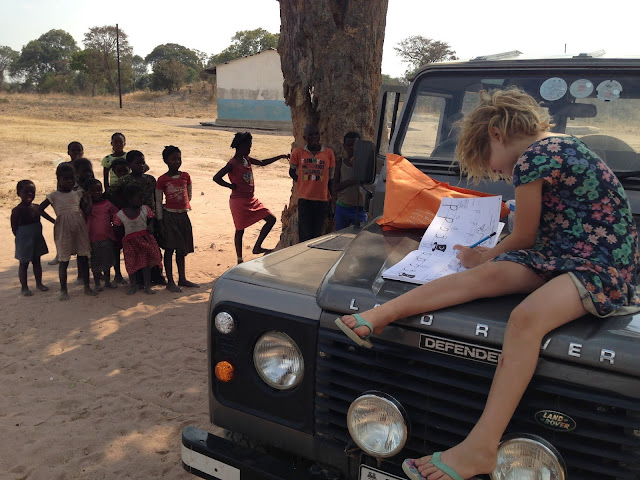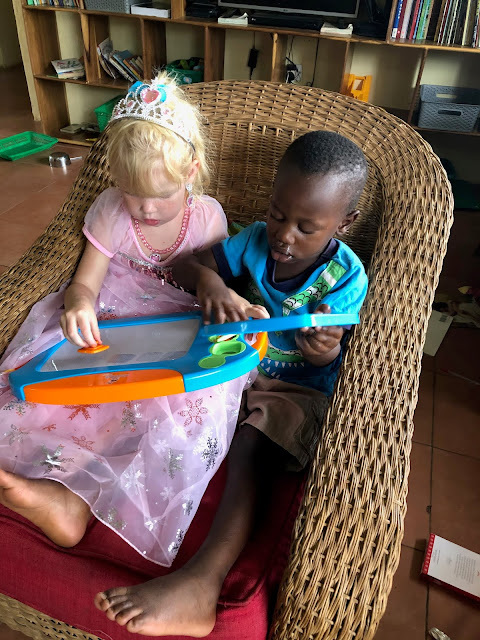If there are two things that have massively shifted in the United States in recent months it’s that the realities of race relations in our country are finally getting the attention they deserve; and second, due to Covid, more families are homeschooling than ever before. I, like many of you, never imagined that I would be a homeschool mom, and yet we are now in our fourth year. What I’ve learned thus far on my homeschooling journey is that my favorite part of being my kids’ teacher is that I have complete control over what they learn and how they learn it. I see homeschool as a golden opportunity to infuse family values into the academic culture of our home, particularly with respect to how we engage race.
Now before I go any further I just need to put out the disclaimer that we are in no way a precious homeschool family. I use the phrase "homeschool mom" very loosely. I still work full time, I have a million things on my plate and I try really hard to not neglect my kids, which still happens more than I’d like.
I’m not actually sure we got in 180 days of learning last year. I don’t do cute activities. I don’t teach Latin. There is no morning basket or hymn study because this mama doesn’t have time for that. I am eclectic and minimalist and if you want tips on how to do preschool in the bathtub, I’m your person.
We do school whenever it's convenient, I delegate tasks to unsuspecting travelers, I multi-task to a fault. It's usually not pretty, and some days I cry, but we make it work.
So with that glowing self assessment to set the stage, hear me when I say that even in the midst of chaos, the things that matter rise to the top, and integrating our values into the academic pursuit is always at the top – our values around racial justice included.
I made an Instagram post about this recently that seemed to really resonate with people and so I wanted to share a bit more about what race conscious home-education looks like for us.
For starters, our free-reading shelves are stocked with books that do a good job of celebrating black culture and acknowledging black struggle. We have acquired as many multi-cultural books as we can get our hands on so that our bookshelves reflect the true diversity of the world and do not perpetuate white exceptionalism. These books are highly curated and screened for content and voice. Our living room books are a reflection of us: we don’t do colorblind; we don’t do white supremacy; we don’t tolerate racist micro aggressions – even in children’s literature.
On our school shelves are stocked with books that I expect to read with them. In this lineup we have the good, the bad and the ugly. The bad and the ugly hold their spots simply because there is value in the debrief. With mom as a guide, we let racism come out of the shadows. These white-supremacist authors might be dead but their proud-boy decedents are still on prime-time television so we engage them. We read of early explorers and talk about the start of the slave trade. We read about the founding of America and the ethnic cleansing of Native Americans. We talk about the beliefs that white people had that justified the dehumanization of non-whites. I don’t screen offensive ideas or language. I just stop reading, rest the book on my lap, and call out the racism in every paragraph. We have conversations about how these ideas are equally prevalent today and what we are supposed to do with that.
These conversations are now so common for us that before the word out of my mouth, somebody is protesting, “THEY AREN'T INDIANS. White people should know better – they stole the land from Native Americans.” The mention of slavery makes one child want to punch a wall. These days, the kids rant faster than I do, and honestly, that feels accomplished.
I didn’t grow up racist. Except for the fact that I was taught that Columbus discovered America and that Vespucci and Cortez were mistreated explorers who received an unfortunate welcome in the New World. We read Little House on the Prairie and not once did anyone say the word “problematic.” I was taught that slavery ended with the Civil War and racism ended with MLK. So yeah. I grew up racist.
I want something different for my kids. And that requires not only a different awareness, but also a different response. Like Angela Davis said for all of us to hear and grapple with, It’s not enough to not be racist, you have to be anti-racist.
Anti-racism is a matter of acknowledging the status-quo and taking it to task. It's about assessing whether our kids are receiving an education that reinforces white-supremacy or challenges it. The gift of homeschooling, my friends, is that you can sculpt for your children what their anti-racist education is going to look like. For me, this is invaluable.
In addition to the history reading and literature selections, we talk about inequalities in the sciences. We do copy work from Jesuit prayers of lament. Creative writing prompts are meant to provoke contemplation and action. We create art and memorize key scripture. We engage what matters.
Anti-racism isn’t a topic. It’s not a unity study. Anti-racism is an attitude and an orientation and a lifestyle. Racism is the air that we all breathe and therefore as parents and educators, our response to that fact needs to be commensurate. If I’m teaching my kids to identify faces on coins, I need to also teach them to identify systems of oppression that put those faces there. If we’re celebrating freedom, we need to teach the barriers to enjoying it. Education ought to prepare our kids up to be functional, wise, contributing members of society. If anti-racism isn't a central theme in that, our society is doomed.
I know plenty of people are pushing back against such ideas by saying, “it’s not all about race,” but… it kind of is. Unless humanity suddenly becomes translucent, color matters, always. In my experience, it’s only white people who struggle to see that. I want my kids to appreciate that wherever they are, and in everything they do, they need to be consciously aware of who is in charge, who needs defending, and how to make wrong things right. This requires making sense of the story of race.
This is not as advanced as it sounds. My five-year-old who doesn’t even know her days of the week yet (I told you I wasn't precious) gets it. Like she said to me last week, “We stand up for brown people. It’s what we do.” It’s that simple. Racism and privilege and justice and oppression – these are not mature topics to wait for a grad school class in critical race theory. When we talk about them early, and if we unbind them from shame, our kids are equipped to engage their world with confidence and a sense of purpose. It really just takes intentionality and time, and thanks to the routine of homeschool we JUST. KEEP. AT. IT.
There's a million ways to do this and and the anti-racist education will vary by age, grade, personality etc. My goal here isn't to be dogmatic about method but just to promote that it should be happening. The point is that, for most of us, defaulting to the educational culture that we grew up in is just going to produce more of the same culture that we're now trying to dismantle. And so my word of invitation to every homeschool parent out there, particularly the ones who are struggling to see upside of the covid-driven choice: you have the opportunity and the duty to run an anti-racist homeschool. It’s important. It’s possible. It’s worthwhile.
The world needs us to do this. Let’s live up to our potential.









































